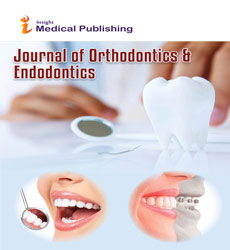Orthodontic Treatment for a Patient Who Developed Acute Myeloid Leukemia: A Case Report
Hsin-Chung Cheng*, Yi-hsuan Lee, Kai-Liang Jiang and Yi-Jyun Chen
Department of Dentistry, Taipei Medical University Hospital, Taipei, Province of China
- *Corresponding Author:
- Hsin-Chung Cheng
Department of Dentistry, Taipei Medical University Hospital, Taipei, Province of China
Tel: 8862273616615100;
E-mail: g4808@tmu.edu.tw
Received date: November 20, 2019, Manuscript No. IPJOE-19-2962; Editor assigned date: November 25, 2019, PreQC No. IPJOE-19-2962 (PQ); Reviewed date: December 09, 2019, QC No. IPJOE-19-2962; Revised date: June 28, 2022, QI No. IPJOE-19-2962 (QI); Manuscript No. IPJOE-19-2962 (R); Published date: July 26, 2022, DOI: 10.36648/2469-2980.8.6.12
Citation: Cheng H, Lee Y, Jiang K, Chen Y (2022) Orthodontic Treatment for a Patient Who Developed Acute Myeloid Leukemia: A Case Report. J Orthod Endod Vol: 8 No: 6.
Abstract
Background: Acute myeloid leukemia, AML, is a rare form of malignant blood cancer, and its incidence is approximately 4.2 per hundred thousand men and women per year all over the world. There are even fewer cases diagnosed with AML who happen to receive orthodontic treatment. Special considerations will have to be taken when treating those patients.
Case report: This case report describes the treatment progress of a 25 year-old female with Angle class I malocclusion combined with minor crowding of her upper anterior region and congenital missing of #31, 41, who was diagnosed with AML during orthodontic treatment. The treatment was carried out in a conservative way with non-extraction mechanism. Oral hygiene reinforcement was delivered during the whole treatment. A satisfactory result was obtained in the end.
Conclusion: Pre-treatment clinical examination and evaluation by orthodontists in AML are necessary. This will enable the orthodontists to make appropriate treatment plans that are most beneficial to the patients. During the treatment, orthodontists should not only monitor the schedule of tooth movement, but pay close attention to any minor changes in oral tissue as well as patients’ physical and mental status. Prevention of iatrogenic trauma, making conservative treatment plans, intentional oral hygiene care, and good communication between the patients, the physicians, and the orthodontists are key to a satisfactory result.
Keywords
Acute myeloid leukemia; Orthodontic treatment; Interdisciplinary treatment
Introduction
A thorough clinical examination and comprehensive evaluation is an important part of orthodontic treatment [1]. Basic examination includes history review of systemic disease and allergy against food or drug of the patient [2]. Based on the result of this examination, we orthodontics will conclude whether this patient is suitable for receiving orthodontic treatment or not, and the successful rate and benefit cost ratio from this treatment will be decided [3]. Therefore, this examination is the necessary key stone before starting active treatment [4]. Unfortunately, some patients didn’t understand their health condition themselves, even if they had some kind of disease [5]. It was also the case that they were diagnosed with some kind of medical problem midway through orthodontic therapy [6]. This case report reviews a patient who developed and diagnosed with Acute Myeloid Leukemia, AML, after undergoing treatment with orthodontic appliances for several months [7]. This disease not only affected the health condition of the patient significantly, but also affected the progress of our orthodontic treatment [8].
Acute Myeloid Leukemia, AML, a malignant blood cancer developed by abnormal proliferation of bone marrow myeloblastic cells, conducts the rapid proliferation of abnormal bud cells within bone marrow, and affects the production of normal hematopoietic cells [9]. Although AML is the most common type of acute leukemia in adult groups, it can also occur in any group of ages [10]. The incidence of childhood leukemia is 10% to 15%, and it accounts for 1.2% of people died from cancer in United States 1, which represents a rare form of cancer [11]. It was revealed by previous studies that the incidence of AML is hundred thousand in Taiwan [12]. According to French-American-British, FAB, the most widely used classification system of AML, AML was mainly divided into type M 1 to M 7, and then type M0 was added later (Table 1) [13].
| Type | Name |
|---|---|
| M 0 | Minimally differentiated acute myeloblastic leukemia |
| M 1 | Acute myeloblastic leukemia, without maturation |
| M 2 | Acute myeloblastic leukemia, with granulocytic maturation |
| M 3 | Promyelocytic, or Acute Promyelocytic Leukemia (APL) |
| M 4 | Acute myelomonocytic leukemia |
| M 5 | Acute Monoblastic leukemia (M5a) or acute Monocytic leukemia (M5b) |
Table 1: Classification of AML according to French-American- British (FAB).
On the other hand, AML was subdivided according to cytogenetic abnormalities by WHO. They described the regimens and treatment prognosis by different kinds of cytogenetic abnormalities and gene mutation types (Table 2).
| Different classifications of acute myeloid leukemia |
|---|
|
| Following MDS or MDS/MPD |
| Without antecedent MDS or MDS/MPD, but with dysplasia in at least 50% of cells in 2 or more myeloid lineages |
| Acute myeloid leukemia and myelodysplastic syndromes, therapy related |
| Alkylating agent/radiation–related type |
| Topoisomerase II inhibitor–related type (some may be lymphoid) |
| Others Acute myeloid leukemia, not otherwise categorized |
Classify as:
|
Table 2: WHO classification of acute myeloid leukemia.
Patients who are suffered from AML represent clinical characteristic signs include malaise, easy to gasp, and decreasing in exercise capacity [14]. Caused by the decreasing amount of erythrocyte, platelet and normal leukocyte of peripheral blood, patients are easily found of skin bleeding, bruising, and increasing chances of infections of mouth, throat, and skin [15]. Febrile neutropenia are frequently noticed, and lymphadenopathy, hepatosplenomegaly and extramedullary tissue invasion are also found in some patients. When referring to oral symptom and signs, hypertrophy of gingival tissue and spontaneous bleeding are frequently noticed [16].
Treatment of acute myeloid leukemia requires the use of broad-spectrum antibiotics to control infection, and the use of chemotherapy to get remission [17]. After remission, consolidate chemotherapy is needed in order to cure this disease [18]. As for the poor prognosis type of acute myeloid leukemia, bone marrow or stem cell transplantation is needed [19].
Our case report describes a patient who developed acute myeloid leukemia during active orthodontic treatment, and after receiving chemotherapy and stem-cell transplantation, the orthodontic treatment was restarted and then finished finally [20].
Case Report
Diagnosis and etiology
Ethical approval of this case report was obtained from Institutional Review Board of Taipei Medical University (approval number: N201709067) [21]. Patient-25 y/o Female.
Chief complaint: There are some gaps around my bottom teeth, and I don’t want to pull-out my teeth (Figures 1 and 2) [22].
Extra-oral examination
• In frontal profile view, the ratio of facial height of uppermiddle- lower was 1:1:1. Facial asymmetry was negative. Lip incompetence was negative.
• Lateral profile view nearly straight facial profile.
Intra-oral examination
• Angle class I malocclusion.
• OJ 3 mm, OB 4 mm.
• Dental midline to facial midline: Upper shift to left 1.5 mm, lower on.
• Congenital missing of the teeth.
X-ray examination
• Skeletal class I pattern.
• Large mandibular plane angle, up to 42 degrees.
Diagnosis
• Angle class I malocclusion combined with congenital missing of teeth.
Treatment objectives and plan
The treatment objectives were to relieve the crowding of upper dentition and maintain the profile. As for lower dentition, close the generalized gaps from teeth.
Treatment alternatives
Since there were two congenital missing teeth of the teeth, under normal circumstances, extraction of two maxillary first premolars or insertion of Temporary Anchorage Devices (TADs) to assist upper arch distalization would have been considered to relieve the crowding of upper dentition in order to establish a normal overjet [23]. However, after we discussed with the patient, she refused to receive the treatment with extraction of her two maxillary first premolars [24]. With her fairly straight profile, we decided to simultaneously relieve crowding of upper dentition and maintain the anteroposterior position of the maxillary incisors by use of TADs to facilitate upper arch distalization as well as closure of the generalized gaps from #43 to #33 by protraction of lower premolars and molars. The patient agreed with this treatment plan [25].
Treatment progress
Her active orthodontic treatment was initiated in April. 2008, and molar bands were set. After that, patient canceled the appointment, and didn’t come back to our clinic for four months. Later in September 2008, she came back to clinic, and described poor physical health during this period. According to her, somehow there was a feeling of weakness and unwell those days. However, no other serious illness was indicated by this time, and no oral problem or abnormality was noticed. Then we bonded the upper dentition with 0.18 slot standard bracket system and placed the initial main archwire on. But after that, patient canceled our appointment again, and we couldn’t get into touch with her for up to nine months (October, 2008 to July, 2009). We tried again and again, and finally got contact with her friends, and were aware of that she was suffered from leukemia. But we were failed to get more information about her health condition since we couldn’t get contact with her herself.
It was until July 2008, the patient came back to our clinic again. She told us that she was sent to the emergency room because of weakness and dizziness, and after blood test, acute leukemia with unspecified cell type was indicated. After referral, a diagnosis of acute myeloid leukemia of Type M 2 or M 4 was indicated. Induction chemotherapy was begun in November 2008 and then lasting to February 2009, but because of treatment failure, peripheral stem cell transplantation was introduced in March 2009. She took many chemotherapy drugs and immunosuppressive drugs during this period.
Her health condition was improved by that time and was able to discharge in April 2009, but long-term usage of immunosuppressive drugs Cyclosporine was still indicated. The most special thing is that the patient still had her orthodontic brackets and archwires on during the whole treatment period of leukemia.
The patient came back to our clinic in July 2009, and continued to receive the unfinished orthodontic treatment. Because she was still taking immunosuppressive drugs, in order to avoid infection in oral tissue, to change the original treatment plan was necessary. Therefore, the use of TADs in the original treatment plan was canceled. Instead of that, bite -turbo with light interact elastics were introduced to improve the large overjet. Also, careful manipulation of the instruments was conducted to avoid iatrogenic trauma. Oft-repeated oral hygiene reinforcement was delivered. Most important of all, we maintained good communication with the patient, the patient’s family, and the physician through the rest of the treatment. Her orthodontic treatment was completed in July 2010.
Treatment results
An acceptable treatment outcome was accomplished. Though it was a compromised non-extraction treatment modality, normal overjet and overbites as well as maximum interdigitation were established. Good facial profile was maintained. The patient felt satisfied with the final result (Figures 3-6 and Table 3).
| Another case | Our case | |
|---|---|---|
| Patient data | Female, 14 y 7 m | Female, 25 y 10m |
| Orthodontic diagnosis | Class II D2 with crowding | Class I with crowding |
| Orthodontic treatment plan | Extraction therapy | Nonextraction therapy |
| Age of leukemia developed | 17 y 2 m | |
| Oral symptom and signs | Gingival hyperplasia | N/A |
| Chemotherapy | Done | Done |
| Bone marrow transplantation | Done (17 y 9 m) | Done |
| Orthodontic devices | Not removed | Not removed |
| Complication after bone marrow transplantation | Mucositis, Facial cellulitis | N/A |
| Orthodontic treatment | Completed | Completed |
| Immunosuppressive drugs | Cyclosporine A, Prednisolone | Cyclosporine A |
| Prognosis | Death | Survival |
Table 3: Case comparison.
Discussion
Case comparison
Patients who developed acute myeloid leukemia during orthodontic treatment were rarely found. After literature research, only one case was reported before. Compared with our patient, the details of similarities and differences were listed. Both of these two patients developed acute myeloid leukemia during orthodontic treatment. They all had their orthodontic devices all along with them during chemotherapy and bone marrow transplantation. Both of the patients ended up with good orthodontic treatment outcomes. However, the prognosis condition was quite different. Another case was relapsed with leukemia 6 months after bone marrow transplantation. Our case kept good prognosis condition after treatment of leukemia, and there was no mucositis or cellulitis in oral tissue. Even if she was taking immunosuppressive drugs Cyclosporine A, gingival hyperplasia was not found during orthodontic appointments. Because the patient could maintain good oral hygiene, plaque accumulation and bacteria proliferation problem didn’t occur. Besides, the treatment plan also changed from mini-screws devices to non-invasive treatment modalities. By further reducing the possibility of infection, successful orthodontic treatment was achieved smoothly (Table 3).
Orthodontic consideration
There are many orthodontic considerations worthy of discussion for patients who were suffering from acute myeloid leukemia. Based on the timing of developing this disease, the topics can be divided into two categories, patients who developed AML before orthodontic treatment and patients who developed AML during orthodontic treatment.
Patients who developed AML before orthodontic treatment
Based on the timing of developing this disease, the consideration can be further divided into two categories, patients who developed AML before orthodontic treatment and ready for or just under treatment of leukemia, and patients who developed AML and has completed treatment of leukemia before orthodontic treatment.
If the patient has been suffering from AML and was just preparing to accept (or was undergoing) chemotherapy and bone marrow transplantation, orthodontic treatment was absolutely not suitable for them. Caused by the deficient ability of immune system during this period, the probability of infection would highly increase, and the orthodontic oral devices might easily lead to oral mucositis, cellulitis, and then further affected patients’ health. Therefore, orthodontic treatment should be delayed until the completion of treatment of leukemia. According to Sheller and Williams, orthodontic treatment would be suitable for patients who completed treatment of leukemia more than two years, without any evidence of recurrence, the recurrence probability has been reduced, and patients do not need to continue taking immunosuppressive drugs.
If the patient has completed treatment of leukemia and fits the criteria listed above, then the age of unset of AML should be taken into consideration. It should be very careful if the unset age of AML was mixed dentition period. According to the study of Göran Dahllöf and Jan Huggare, if AML was developed since mixed dentition period, due to the processing of chemotherapy and radiation therapy, tooth development and craniofacial development would be affected and further leads to developmental abnormalities of permanent teeth which means arrested development of roots and shortening of root length, such as short v-shaped roots, premature apical closure, enamel disturbances, microdontia, or aplasia. Moreover, the root resorption would be more severe in lower dentition than upper. Thus, these cases are not suitable for orthodontic treatment, and we should carefully evaluate and consider about the necessity of orthodontic treatment. But even so, it is not indicated that they can’t receive orthodontic treatment. A previous research 10 conducted orthodontic treatment into ten AML patients and found only one root resorption case. Although not all patient were satisfied with their treatment results (from ten patients, four patients unsatisfied with the treatment outcomes), but orthodontic treatment didn’t cause any other damage to them. Thus, to this kind of patients, orthodontic treatment is feasible, after comprehensive assessment of tooth development, and the treatment plan should follow these principles:
• Use the devices that can cause less or none root resorption
• Use light force
• Finish as soon as possible
• Select the most simple treatment plan
• Do not treat the lower dentition
Check root length after 6 months of initiation of treatment. If over than 20% root resorption was noticed, orthodontic device should be removed, and the treatment process should stop. On the contrary, the orthodontic treatment can proceed if no significant root resorption was found.
If patients received bone marrow transplantation during childhood, previous researches revealed that most of them showed reduced saliva secretion during all lifetime, resulting in increased incidence of caries. Therefore, if these patients need to receive orthodontic treatment, it may be necessary to use artificial saliva, wetting fluid and other instead items.
Patients who developed AML during orthodontic treatment
Since 10% of AML patient, especially M 4 and M 5 type of AML showed wounds in oral or pharyngeal region during the initiation period of AML, orthodontic doctors played an important role at this time. If patients showed redness and swelling of gingiva, soreness, gingival hyperplasia, pharyngitis, or lymphadenopathy, orthodontic doctors should ask them if there is any sign of tiredness, easy to gasp, or excessive bruising or bleeding. If patients showed symptoms and signs mentioned above, orthodontic doctors should refer them to receive further medical examination as soon as possible to confirm whether they developed these types of disease or not.
Since AML threats to their life and the treatment process is so long and hard, great psychological impact might arise around patients and their families. Orthodontists should pay special attention to their mental state and be more careful about the communication attitude during this period.
If it is possible, consultation with the patient’s physician to understand the prognosis about this patient is recommended for orthodontists. After that, communicate with the patient about suspending the orthodontic treatment and removing orthodontic appliance in order to avoid possible infection during treatment progress of leukemia.
If orthodontic devices of which easily stimulate the oral tissue were chose and used, the patient should be instructed to keep good oral hygiene and to use antibacterial cleaning solution to keep devices clean to prevent the possibility of oral infection.
When referring to this case report, since our patient rejected to remove orthodontic appliance during the process of chemotherapy and bone marrow transplants, oral mucositis still can’t be avoided even with good oral hygiene and daily cleaning with iodine, and that is a burden on the patient's health. Consequently, it is highly recommended that orthodontic doctors should communicate with the patient early in the treatment progress of leukemia, and try to convince patients removing orthodontic devices to avoid psychological and physical burden during leukemia treatment period.
The influence of related drugs
Since our patient mentioned in this case report continued her orthodontic treatment right after the completion of the treatment of leukemia, the situation was differed from the suggestion that orthodontic treatment was recommended two years after the completion of the treatment of leukemia. In spite of this, we can observe whether the orthodontic treatment was affected or not during conducting of immunosuppressive drugs by this chance.
According to previous studies, immunosuppressive drugs Cyclosporine A might cause gingival overgrowth, heavy plaque accumulation, and gum inflammation. Gingivectomy may be needed in serious cases. Since keeping good oral hygiene was difficult during this period, orthodontic treatment was not recommended in patients who was taking such drug, or can be delayed six months after starting to take this drug, since the first six months of administration were the peak of gingival hyperplasia. Nevertheless, it was also shown in previous studies that gingival overgrowth in patients who was taking this drug was not directly correlated to the dosage, but the amount of plaque and their gingival fibroblast phenotypes. During the visits of orthodontic treatment, we can find that even if our patient was also taking Cyclosporine A, gingival overgrowth was not found till the end of orthodontic treatment. The patient herself kept good oral hygiene continuously reduced the amount of plaque was probably the reason why gingival overgrowth was not found during her treatment. This may be a reference for patients who were taking Cyclosporine A. It is possible for them to receive orthodontic treatment without any gingival hyperplasia or other problem arisen, as long as they can maintain high quality of oral hygiene habit, just like our case.
On the other hand, whether Cyclosporine A has any influence on tooth movement during orthodontic treatment is also another topic worthy of discussion. It was discovered by previous study that Cyclosporine A may increase bone metabolic rate. It was also confirmed in animal experiments that Cyclosporine A may increase bone remodeling rate, and consequently speed tooth movement. Since our case was nonextraction therapy, the amount of active movement was not large enough to show how fast the teeth moved, so we can’t determine whether Cyclosporine A increased the speed of tooth movement or not in this case report. Further investigation is needed to find out if and how Cyclosporine A influences tooth movement in human body.
Conclusion
Pre-treatment clinical examination and evaluation by orthodontics are very important. If past history related to leukemia was recorded in patients’ chart, the feasibility of orthodontic treatment may need to be considered again and its treatment planning should be further detailed programmed. During the progress of orthodontic treatment, it is important not only to monitor the schedule of tooth movement, but also to pay attention to any minor changes in oral tissue. Sometimes, a little more attention can help the patient to find out the problem, i.e., early diagnosis and early treatment of leukemia. Do not neglect the role of orthodontics.
In the case of patient who developed leukemia during orthodontic treatment, pay more attention, maintain good communication with patients and their family, and consult with their physicians to understand the types and prognosis of leukemia. After considering the current progress of orthodontic treatment, discuss the treatment consideration with patients, and then choose the most beneficial treatment option with priority of their lives, to achieve satisfactory treatment results for them.
References
- Jemal A, Thomas A, Murray T, Thun M (2002) Cancer statistics 2002. CA Cancer J Clin 52: 23.
- Huang SY, Yao M, Tang JL, Lee WC, Tsay W, et al. (2007) Epidemiology of multiple myeloma in Taiwan: increasing incidence for the past 25 years and higher prevalence of extramedullary myeloma in patients younger than 55 years. Cancer 110: 896-905
- Bennett JM, Catovsky D, Daniel MT, Flandrin G, Galton DA, et al. (1976) Proposals for the classification of the acute leukemias. French-American-British (FAB) co-operative group. Br J Haematol 33: 451-458.
- Heerema-McKenney A, Arber DA (2009) Acute myeloid leukemia. Hematol Oncol Clin North Am 23: 633-654.
- John P. Greer, et al. Wintrobe's Clinical Hematology 12 edition
- Byrd JC, Mrozek K, Dodge RK, Carroll AJ, Edwards CG, et al. (2002) Pretreatment cytogenic abnormalities are predictive of induction success, cumulative incidence of relapse, and overall survival in adult patients with de novo acute myeloid leukemia: Results of Cancer and Leukemia Group B (CALGB 8461). Blood 100: 4325-4336.
- Isaac AM, Tholouli E (2008) Orthodontic treatment for a patient who developed acute myeloid leukemia. Am J Orthod Dentofacial Orthop 134: 684-688.
- Sheller B, Williams B (1996) Orthodontic management of patients with hematologic malignancies. Am J Orthod Dentofacial Orthop 109: 575-580.
- Dahllof, G, Huggare J (2004) Orthodontic considerations in the pediatric cancer patient: A review. In seminars in orthodontics 10: 266-276.
- Dahllof, G, Huggare J (2004) Orthodontic considerations in the pediatric cancer patient: A review. In seminars in orthodontics 10: 266-276.
- Runge ME, Edwards DL (2000) Orthodontic treatment for an adolescent with a history of acute lymphoblastic leukemia. Pediatr Dent 2: 494-498.
- Dahllof G, Bagesund M, Ringden O (1997) Impact of conditioning regimens on salivary function, caries-associated microorganisms in children treated with bone marrow transplantation: A 4-year longitudinal study. Bone Marrow Transplant 20: 479-483.
- Dahllof G, Bagesund M, Remberger M, Ringden O (1997) Risk factors for salivary dysfunction in children one year after allogeneic bone marrow transplantation. Eur J Cancer Oral Oncol 33: 327-331.
- Antia E (2009) Orthodontic Management of Medically Compromised Patients. Annals and Essences of Dentistry 1.
- Grimwade D (2001) The clinical significance of cytogenetic abnormalities in acute myeloid leukemia. Best Pract Res Clin Haematol 14: 497-529.
- Bergmann OJ (1988) Oral infections and septicemia in immune compromised patients with hematologic malignancies. J Clin Microbiol 26: 2105-2109.
- Greenberg MS, Cohen SG, McKitrick JC, Cassileth PA (1982) The oral flora as a source of septicemia in patients with acute leukemia. Oral Surg Oral Med Oral Pathol 53: 32-6.
- Berkowitz RJ, Crock J, Strickland R, Gordon EM, Strandjord S, et al. (1983) Oral complications associated with bone marrow transplantation in a pediatric population. Am J Pediatr Hemat Oncol 5: 53-57.
- Seymour RA, Ellis JS, Thomason JM (1993) Drug-induced gingival overgrowth and its management. J R Coll Surg Edinb. 38: 328-332. Review.
- Mavrogiannis M, Ellis JS, Thomason JM, Seymour RA (2006) The management of drug-induced gingival overgrowth. J Clin Periodontol 33: 434-439. Review.
- Krishnan V, Davidovitch Z (2006) The effect of drugs on orthodontic tooth movement. Orthod Craniofac Res 9: 163-171.
- Daley TD, Wysocki GP, Day C (1986) Clinical and pharmacologic correlations in cyclosporine-induced gingival hyperplasia. Oral Surg Oral Med Oral Pathol 62: 417-421.
- Ekelund AL, Nilsson O (1996) Effects of cyclosporin A on bone turnover and on resorption of demineralized bone matrix. Clin Orthop Relat Res 326:127-134.
- Moumeni Danaei SH, Omid Khoda SM (2007) The Effect of Cyclosporine A on the Orthodontic Tooth Movement in Rats. J Dental School Summer 25: 209-215.
Open Access Journals
- Aquaculture & Veterinary Science
- Chemistry & Chemical Sciences
- Clinical Sciences
- Engineering
- General Science
- Genetics & Molecular Biology
- Health Care & Nursing
- Immunology & Microbiology
- Materials Science
- Mathematics & Physics
- Medical Sciences
- Neurology & Psychiatry
- Oncology & Cancer Science
- Pharmaceutical Sciences
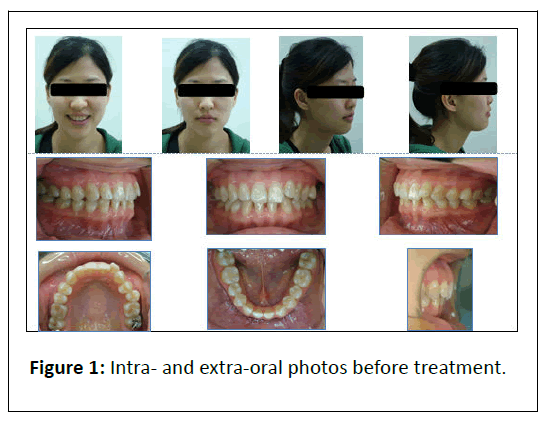
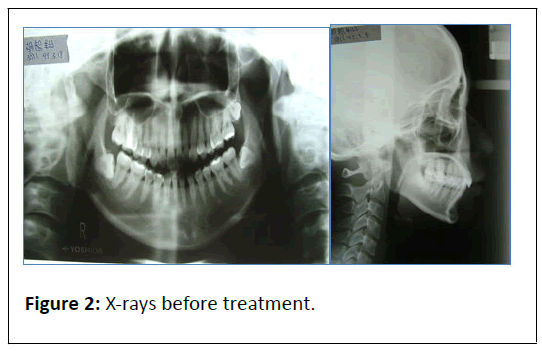
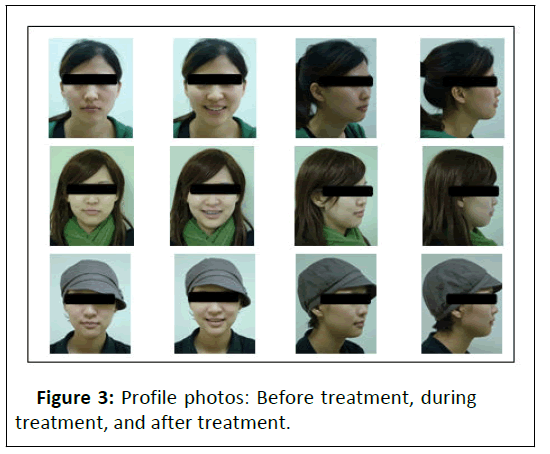
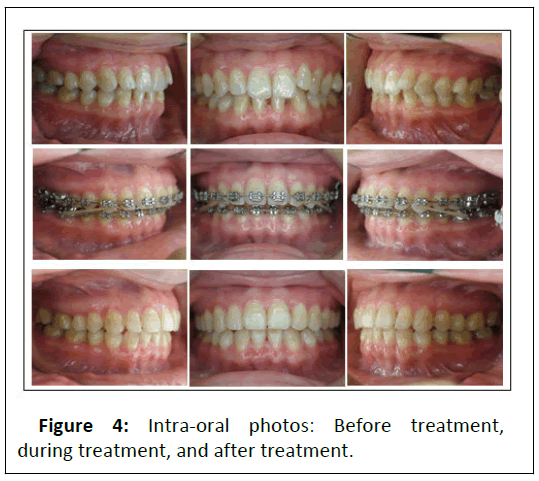
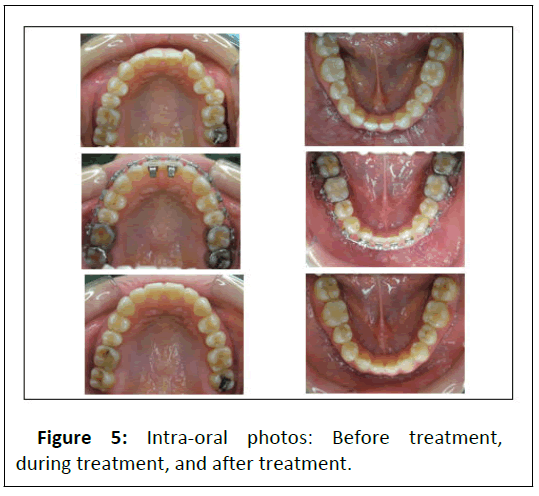
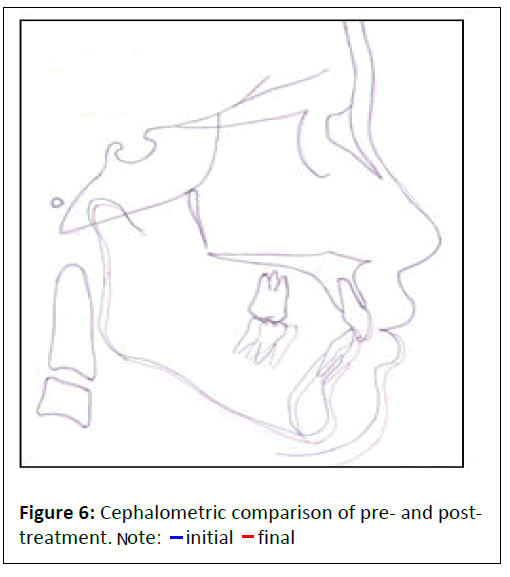
 initial
initial  final
final